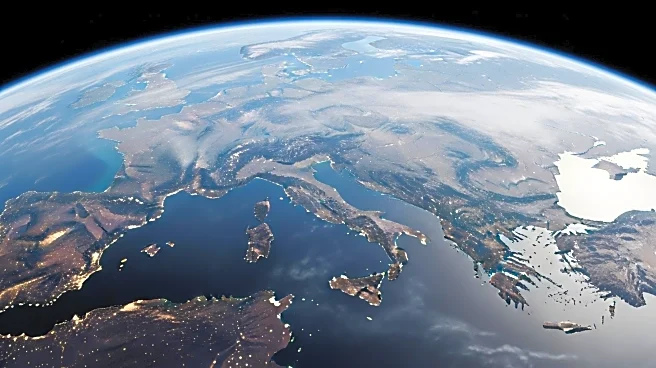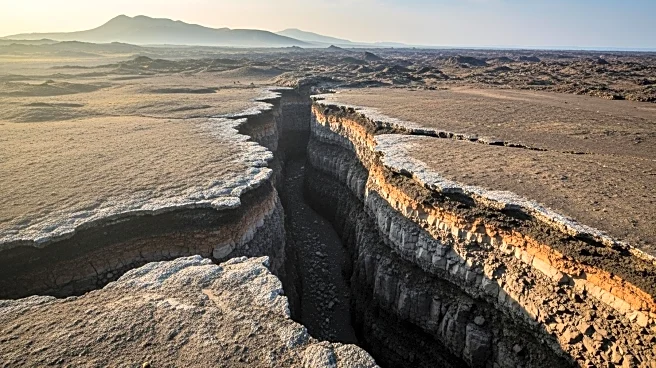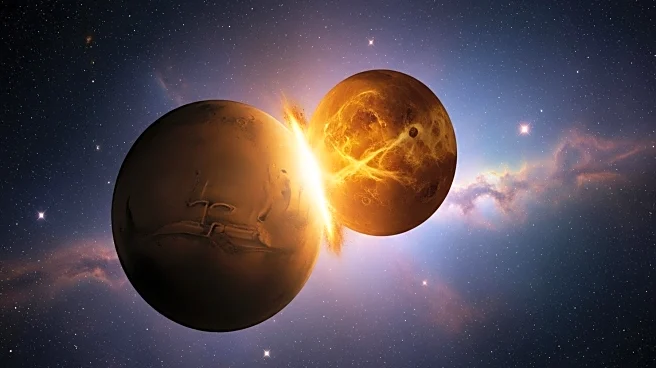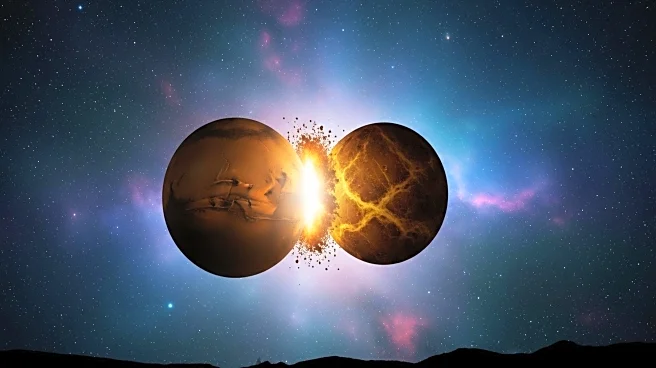What is the story about?
What's Happening?
A recent study has uncovered a hidden hierarchical pattern in the geological events that mark transitions between different chapters in Earth's history. Conducted by Andrej Spiridonov and his team at Vilnius University, the research reveals that these transitions, which include significant events like mass extinctions and evolutionary explosions, follow a multifractal logic. This pattern suggests that Earth's history is not as random as previously thought, but rather deeply structured and hierarchical. The study focuses on the Phanerozoic Eon, which spans approximately 540 million years and includes major eras such as the Cenozoic, Mesozoic, and Paleozoic. By analyzing stratigraphic data and the boundaries of marine animal ranges, the researchers identified clusters of significant events separated by long periods of stability. Their findings indicate that to fully understand Earth's natural variability, geological records covering at least 500 million years are necessary.
Why It's Important?
The discovery of a mathematical pattern in Earth's geological history has significant implications for understanding both past and future planetary changes. By recognizing the structured nature of Earth's historical events, scientists can better model future changes and predict potential global upheavals. This research provides a framework for anticipating the extremes of Earth's behavior, which is crucial for preparing for future environmental challenges. The study's findings could influence various fields, including geology, climate science, and environmental policy, by offering a more comprehensive understanding of Earth's dynamic systems. As human history has occurred during a relatively stable period, this research highlights the importance of preparing for potential future disruptions.
What's Next?
Future research will likely build upon these findings to further explore the implications of Earth's hierarchical patterns. Scientists may develop more sophisticated models to predict future geological and environmental changes, potentially influencing policy decisions and resource management strategies. Additionally, this research could lead to a reevaluation of current geological time scales and the methods used to study Earth's history. As the scientific community continues to investigate these patterns, there may be increased collaboration across disciplines to address the challenges posed by Earth's dynamic systems.
Beyond the Headlines
The study's revelation of a structured pattern in Earth's history raises ethical and philosophical questions about humanity's role in influencing planetary changes. As we gain a deeper understanding of Earth's natural variability, there may be increased scrutiny on human activities that contribute to environmental disruptions. This research could also prompt discussions about the long-term sustainability of human civilization and the need for proactive measures to mitigate potential future crises.
AI Generated Content
Do you find this article useful?















